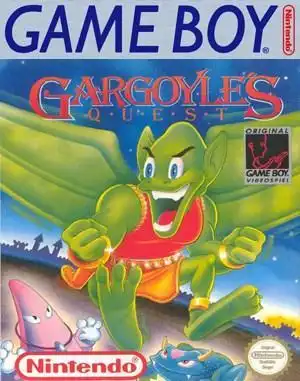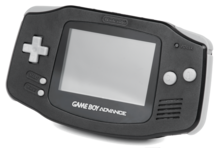Ever wonder what happens when a notoriously tough video game enemy gets promoted to protagonist? That's exactly the bizarre and brilliant premise behind Gargoyle’s Quest, a truly unique gem that first graced the humble Game Boy back in 1990. Forget Arthur; this time, you're stepping into the clawed feet of Firebrand, the persistent red gargoyle who tormented players throughout the legendary Ghosts 'n Goblins series.
Capcom took a bold swing with Gargoyle’s Quest, spinning off one of their most recognizable foes into his own adventure. But this wasn't just a simple platformer clone. Oh no, they injected it with a healthy dose of RPG elements, creating a hybrid experience that felt surprisingly deep for its time and platform. It was the start of a trilogy that would explore Firebrand's own world and destiny.
A Demon's Destiny: What is Gargoyle's Quest?
Set in the Ghoul Realm, long before the events of Arthur's struggles, Gargoyle’s Quest casts you as a young Firebrand. A mysterious force known as the Destroyers threatens his world, and it falls upon our unlikely hero to rise and fulfill a prophecy as the "Red Blaze." The narrative, while simple, provides a compelling backdrop for Firebrand's journey, adding layers to a character previously known only for being a nuisance in Arthur's path.
The game cleverly blends two distinct gameplay styles:
- Overworld Exploration: Navigate a top-down map, visiting towns, talking to other ghouls and monsters (who are the good guys here!), and uncovering the next objective. This is where the RPG elements peek through, though interaction is fairly limited.
- Action Platforming Stages: Enter specific locations on the map, and the game switches to challenging side-scrolling levels. This is where Firebrand's unique abilities shine.
Firebrand's Fearsome (and Fun) Abilities
Unlike the knight in shining armor, Firebrand has a different set of moves:
- Jumping: Standard platforming fare.
- Clinging: Cling to walls, a staple of the character.
- Hovering/Limited Flight: Perhaps his most iconic move. Firebrand can hover for a short duration, which is crucial for navigating gaps and avoiding hazards. This ability is tied to a meter.
- Projectile Attack: Fire small blasts.
What makes the gameplay engaging is the sense of progression. As you advance, you'll find upgrades that enhance Firebrand's core abilities:
- Increased health (vital!).
- Longer hover time.
- More powerful or different projectile types.
- Higher jumps.
These upgrades aren't just stat boosts; they often unlock access to new areas, giving the game a minor Metroidvania feel despite its relatively linear path compared to later games in that genre.
The Challenge and Charm of the Ghoul Realm
True to its Ghosts 'n Goblins lineage, Gargoyle’s Quest is no cakewalk. The action stages require precise platforming and careful use of Firebrand's limited flight meter. Enemies are persistent, and boss battles demand learning patterns – sometimes with a touch of classic retro randomness thrown in.
The overworld introduces random encounters, similar to early JRPGs. While these provide valuable currency (Vials) used mostly for buying 1-ups, they could become frequent and sometimes felt like padding. It's a quirk of the era, but navigating the map could occasionally turn into a grind.
Despite the Game Boy's limitations, the game boasts impressive graphics and sound design for the platform. Firebrand's sprite is detailed and expressive, levels have distinct looks, and the music is atmospheric and memorable – a testament to Capcom's prowess even on handhelds.
A Classic Worth Revisiting
Gargoyle’s Quest was a bold experiment that paid off. It successfully transformed a recurring enemy into a sympathetic hero and blended genres in a way that felt fresh and challenging. It spawned two sequels: Gargoyle's Quest II (NES, Game Boy) and Demon's Crest (SNES), solidifying Firebrand's place as more than just fodder for Arthur's lance.
Today, Gargoyle’s Quest is rightly remembered as one of the standout titles on the original Game Boy, praised for its originality, atmosphere, and unique gameplay.
Where Can You Play Gargoyle's Quest Today?
- Original Hardware: Track down a Game Boy and a cartridge (good luck!).
- Emulation: Play via emulators on PC or other devices (research legal methods).
- Official Re-releases: The game was available on the Nintendo 3DS Virtual Console for a time, though this service is now discontinued. Keep an eye out for potential future collections or online services from Nintendo.
If you're a fan of Ghosts 'n Goblins, unique retro experiences, or just want to see what happens when the bad guy gets his moment in the sun, Gargoyle’s Quest is an adventure well worth undertaking.
FAQ
Q: Is Gargoyle's Quest directly related to Ghosts 'n Goblins? A: Yes, it's a spin-off series starring Firebrand, a recurring enemy from the Ghosts 'n Goblins games. It takes place in the same universe but focuses on Firebrand's story.
Q: How many games are in the Gargoyle's Quest series? A: There are three games: Gargoyle's Quest (Game Boy), Gargoyle's Quest II (NES, Game Boy), and Demon's Crest (SNES).
Q: Is Gargoyle's Quest a difficult game? A: Yes, like its parent series, it's known for being quite challenging, requiring precise platforming and strategic use of Firebrand's abilities.
Q: Is it a pure RPG or platformer? A: It's a unique blend! It features action-platforming stages combined with a top-down RPG-style overworld map, towns, NPCs, and character upgrades.


